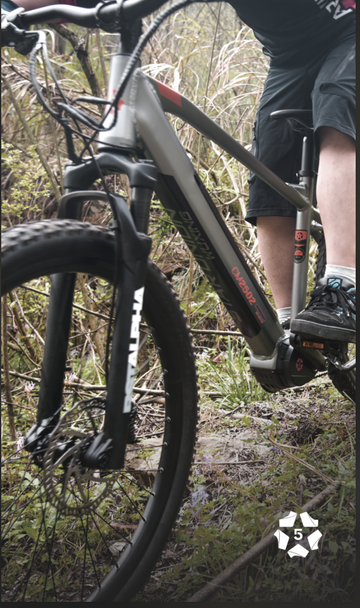Hydraulic Disc Brake Installation Tools for Beginners – Essential Tools You Need
by YunaLi on Mar 03, 2025

When it comes to cycling, the performance of your hydraulic disc brakes directly affects your safety and comfort on the road or trail. While hydraulic disc brakes offer powerful stopping power, installing and maintaining them can be quite complex, especially for beginners. That’s why having the right tools is crucial. In this post, we’ll recommend essential hydraulic disc brake installation tools that will help you complete the job with ease and ensure optimal brake performance.
1. Essential Hydraulic Disc Brake Installation Tools
Installing a hydraulic disc brake system requires specialized tools that can help you complete the process smoothly and ensure that your brake system operates safely and effectively. Here’s a list of must-have tools for beginners:
1.1. Phillips Screwdriver and Allen Wrenches
A Phillips screwdriver and Allen wrenches are some of the most commonly used tools during hydraulic disc brake installation. Allen wrenches are used for installing and adjusting the brake rotors and calipers, while the Phillips screwdriver helps secure various screws. It’s best to invest in high-quality tools to avoid issues caused by worn-out tools during the installation process.
1.2. Hydraulic Brake Bleeding Kit
Hydraulic brake systems require regular bleeding or changing of brake fluid. A hydraulic brake bleeding kit helps you do this quickly and efficiently while ensuring that no air gets into the brake system. The kit typically includes a fluid reservoir, syringe, hose, and other essential components, making it easier to replace the brake fluid without causing any mess.
1.3. Caliper Alignment Tool
Proper alignment of the brake caliper is crucial for smooth and effective braking. A caliper alignment tool helps ensure that the caliper is positioned perfectly in line with the rotor, preventing misalignment, uneven wear, or unnecessary noise. Using this tool improves braking efficiency and reduces the likelihood of issues like squeaking or poor brake performance.
1.4. Rotor Installation Tool
Installing the brake rotor requires precise alignment to ensure it fits properly and doesn't rub against the brake pads or wheel. Rotor installation tools, including a rotor alignment tool and spacers, help ensure the rotor is securely installed, contributing to better braking performance and reducing wear and tear on the system.
1.5. Hose Cutting Tool
Hydraulic disc brake hoses often need to be cut to the correct length for installation. A hose cutting tool ensures precise, clean cuts, which is crucial for proper fitting and to avoid leaks. A good cutting tool is an essential part of setting up a hydraulic brake system.

2. Steps for Installing Hydraulic Disc Brakes
Here’s a basic guide to installing hydraulic disc brakes. If you follow these steps and use the right tools, you’ll be able to install the system properly and enjoy its benefits.
Step 1: Install the Rotor
Start by installing the rotor onto the wheel hub, ensuring it fits perfectly and that the mounting holes align correctly. Use an Allen wrench to tighten the rotor bolts, but avoid over-tightening to prevent damaging the rotor.
Step 2: Install the Brake Caliper
Next, install the brake caliper over the rotor, ensuring the pads are aligned with the rotor. Use a caliper alignment tool to adjust the position of the caliper so that it sits evenly on both sides of the rotor. Tighten the bolts securely but don’t overtighten.
Step 3: Attach the Hydraulic Lines
After installing the caliper, connect the hydraulic brake lines to the brake caliper and brake lever. Make sure to trim the hydraulic hoses to the correct length using the hose cutting tool, then securely attach the lines using appropriate fittings.
Step 4: Bleed the Brakes
Use the hydraulic brake bleeding kit to bleed the system, removing any air bubbles and replacing the brake fluid. Make sure to follow the specific instructions for your brake model to ensure the system is free of air and fully functional.
Step 5: Test the Brakes
Once everything is installed, check all the connections to ensure there are no leaks or loose fittings. Test the brakes by squeezing the brake lever to ensure it feels firm and responsive. If necessary, adjust the brake pads or rotor alignment for optimal performance.

3. Common Issues and How to Fix Them
3.1. Spongy Brakes
If you experience a soft brake lever feel, it may indicate air in the brake lines. You can resolve this by bleeding the brakes and removing any trapped air.
3.2. Poor Braking Performance
If the brakes aren’t working as effectively as they should, it could be due to misalignment of the brake calipers or insufficient brake fluid. Recheck the caliper alignment and make sure the brake fluid is at the correct level.
3.3. Brake Noise
If your brakes are making a squealing or grinding noise, it’s usually because the brake pads are too close to the rotor or there is debris between them. Use the caliper alignment tool to adjust the position and clean the rotor and pads for smooth braking.
4. Conclusion
Hydraulic disc brakes offer excellent stopping power, but their installation and maintenance can be a challenge for beginners. Having the right tools at your disposal is key to successfully installing and maintaining your hydraulic brake system. By using the proper installation tools and following the right procedures, you’ll ensure a smooth, safe, and comfortable riding experience.




